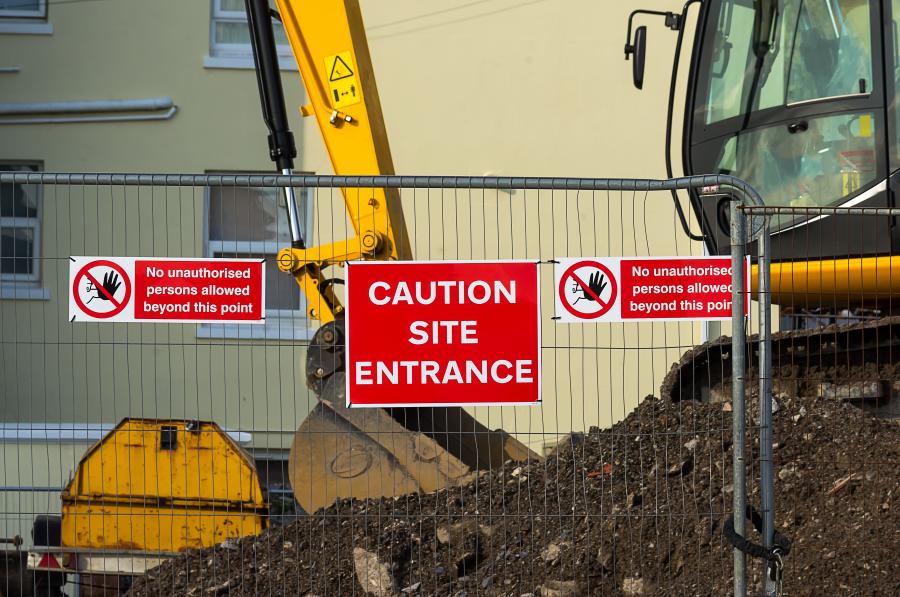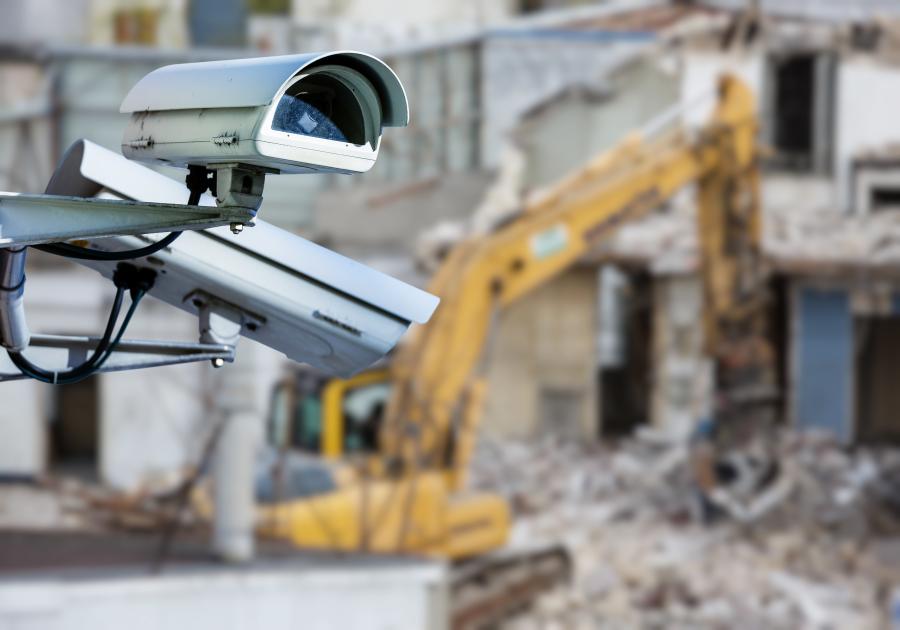With a strong economy, heavy equipment theft is big business all across the United States. The more preventative measures an equipment company takes, the better.
Heavy equipment theft rates track with the overall economy, and 2019 was a good year. Many major cities are in the midst of building and road projects, and construction sites are magnets for machinery heists.
Tractors and loaders represent the highest percentage of stolen machines, and thieves aren't discriminating between equipment yards or construction sites. Being vigilant is crucial to preventing heavy equipment theft, and fortunately it can be a fairly painless process.
Risk management provider National Equipment Register (NER), a Verisk company, reports that because the used equipment market is strong this year, thefts follow suit. The theft of new machines from dealer, rental and contractor equipment yards, as well as equipment rental fraud, were major issues last year and resulted in several large busts. In the theft prevention battle, equipment owners can take advantage of technology they may already have in place.
"Devices can do a lot, but I think equipment owners are still underutilizing what's available to them," said Ryan Shepherd, director and general manager, crime analytics and supply chain solutions, of data analytics company Verisk. "Either they're underutilizing technology, or they're overpaying for it." NER believes the more preventative measures an equipment company takes, the better.
"We advise people to take that approach," Shepherd continued. "If you have telematics technology, use it. If you can't afford telematics, there are geofencing systems which are simple but do work effectively. Have company protocol or documentation in place that says, ‘This is what we do, and we're serious about implementation and follow-thru.'"
Stewardship from equipment company owners is crucial, Shepherd believes, because a lot of times theft happens internally. "An unhappy employee can see if a company owner doesn't pay attention to his equipment. So, it's really a matter of working with your employees as well as external sources to prevent equipment theft. It's not always the thief who's local to that area, or the crime of opportunity," he explained.
Who's Tracking Hot Machines?
Nearly 1,000 pieces of commercial equipment are reported stolen each month, according to The National Insurance Crime Bureau (NICB). The annual cost of equipment theft is estimated to range between $300 million and $1 billion.
Value and mobility are two factors that determine the type of equipment most likely to be stolen.
NER's Equipment Theft Report, published in 2016, notes that value is still the primary factor, except for items too large to move on a small trailer. Another factor is the number of each type of equipment in circulation: Skid steer loaders account for more than 36 percent of new construction equipment financed in the United States, according to NER. Dozers and wheel loaders are the most valuable types of equipment, but because backhoes and skid steers are easier to transport and are versatile machines, they represent a greater percentage of thefts. NER notes that high-value wheeled machines are frequently reported stolen.
Because heavy equipment like excavators, bulldozers and skid steers do not have titles, it's easy for a sophisticated thief or criminal network to steal and claim it's theirs — especially with doctored paperwork ready to go, said Shepherd. As a prevention and recovery service, NER maintains a database of equipment records.
"We run a registration service and record the details of make, model and serial number," he explained.
NER works with local law enforcement in equipment theft investigations to identify machine ownership.
The organization also works to educate local law enforcement about equipment classification.
"Sometimes they don't know a backhoe from a bulldozer, so we make sure they're comfortable with what to look at," Shepherd said.
NER also can perform a background check for liens, previous thefts or insurance claims on a piece of equipment. But NER is not alone in tracking stolen construction equipment.
Online sites, such as Stolen 911, offer users the opportunity to list stolen construction equipment which is then indexed by major search engines. After creating a post, users can easily share the information on social media, and the stolen item is searchable for five years.
Equipment manufacturers also have stepped up efforts to help heavy machine owners prevent thefts. The Cat Machine Security System is Caterpillar's solution, integrated into the machine's electronics. It guards the starting system, engine and transmission, and only a security key can start the machine when the system is armed. Each security key is unique so machines can be restricted to certain models or hours of operation. The system also can be programmed to allow the standard key during active periods and rearm after hours.
Volvo has created an integrated engine lock for its line of diggers. The lock is designed to reduce the risk of machine theft via "triggers" such as machine movement, tampering and unauthorized use or transport. It allows the user to immobilize and track the machine remotely, and alerts are sent when a trigger is activated. The machine is immobilized when it's shut down and can be remobilized through Volvo's CareTrack web portal.
Telematics systems are standard equipment on many new machines. Online bid management software provider iSqFt pushes use of the technology in a blog post saying, it "can act as a deterrent by shutting down the engine when thieves try to drive your equipment offsite and as a recovery tool to locate stolen machines."
Geofencing systems developed by asset management solutions companies such as Austin, Texas-based Rastrac also offer theft-prevention solutions. These systems can alert when a GPS-tagged piece of equipment leaves the construction site. The GPS tag helps the user locate and identify the equipment quickly.
"Fleet tracking for construction equipment is a powerful anti-theft tool that can help improve your odds of recovering stolen equipment intact," said Rastrac.
Security cameras that are highly visible act as a strong deterrent to would-be thieves at your construction site. Solar-powered units with battery backups allow for placement wherever they're needed.
"You typically have the option to record continuous video or take time-lapse photos at scheduled intervals," according to iSqFt's blog on high-tech ways to control construction site theft. Motion detection and infrared sensors, which measure changes in thermal activity, can be used to activate idle cameras and begin recording.
Security cameras can be equipped with Wi-Fi or cellular communication to transmit the video or images for cloud storage or live monitoring through a web portal. With an internet-connected camera you also can get text alerts when its motion or infrared sensors have been activated.
Deterrence Is Simple, But Effective
The harder it is to access your site, the less likely thieves will target your equipment fleet.
"For heavy equipment, wheel locks and other immobilization devices prevent them from being driven off the site or winched onto a trailer and hauled off," iSqFt's blog stated. Some equipment owners remain passive when it comes to theft-prevention, claiming "that's what I have insurance for."
Shepherd said NER is working to change that mentality, reminding equipment owners that "Yes, you do have insurance for that, but it'll affect you down the road with claims." Practicing preventive measures rather than reacting after the equipment is stolen saves everybody in the long run.
NER suggests heavy machinery owners watch for anything that looks out of place. Here are NER's equipment crime warning signs:
- Parked trucks that do not belong to the company, especially box vans, U-hauls and enclosed race-car hauler type trailers.
- Vehicles parked in vacant lots adjoining closed industry businesses, especially with occupants loitering in the area.
- Gates left open at shut-down industrial facilities or construction sites.
- Late-night or early-morning activity inside a yard or on a construction site.
- Overloaded trucks and improperly secured equipment transported during downtime.
NER also offers tips for deterring heavy construction equipment theft in the yard or on the job site:
- Ensure alarms and lighting are all operating properly.
- Consider that a high number of false alarms could be thieves testing your responsiveness; watch for vehicles "casing" your property.
- Test cameras in daylight and after dark — Are you getting usable images of license plates, faces and vehicles?
- Make sure fences and gates provide a complete barrier to adjoining businesses and vacant land. Walk your fence line to be sure nothing has been tampered with.
- Conduct a security survey of the yard and buildings. Walk around the property to see if there are vulnerable points of access or cover.
- Move highly targeted equipment into service bays or more secure areas of the yard.
- Be sure equipment parking areas don't provide cover to thieves.
- Communicate with neighboring businesses to raise awareness of thefts in progress. Confirm that their staff has your emergency contact information.
- Designate someone to check up on the facility at different times during a holiday or extended down time.
- Don't leave anything on a trailer. Secure trailers so thieves can't use them to steal your equipment.
Caterpillar dealer Warren Cat of Midland, Texas, believes it's important to know what drives construction equipment theft.
"Any piece of equipment that has a lucrative brand name, is relatively new, and can easily be loaded or driven off could be considered an easy target for theft at any given work site," according to the company's website. Here are other suggestions from Warren Cat:
- Give each vehicle a recognizable indicator. Stamp or engrave identifiers such as names, symbols or digits on each piece of heavy equipment at your work site. Apply an identifier to each part that could be sold separately on the black market.
- Keep records of all equipment. File the make, model, PIN, serial number and production and purchase dates of each unit or component part. Keep photo files of everything in your fleet for identification.
- Take notice of equipment theft trends. Be especially protective of the types of items that are commonly targeted by thieves.
- Secure your fleet from intrusion. Before the site shuts down each evening, have all the vehicles parked facing into a circle, with smaller pieces of equipment placed in the middle.
- Keep employees up to date on corporate security practices. At the end of each shift, operators should log each machine used and park all machines securely. Each operator should also be aware of the unique identifiers on identical vehicles.
"None of the systems and devices should be used as your sole means of preventing theft," iSqFt noted. "A solid security plan should involve multiple layers of theft deterrents and measures." CEG
Lucy Perry
Lucy Perry has 30 years of experience covering the U.S. construction industry. She has served as Editor of paving and lifting magazines, and has created content for many national and international construction trade publications. A native of Baton Rouge, Louisiana, she has a Journalism degree from Louisiana State University, and is an avid fan of all LSU sports. She resides in Kansas City, Missouri, with her husband, who has turned her into a major fan of the NFL Kansas City Chiefs. When she's not chasing after Lucy, their dachshund, Lucy likes to create mixed-media art.
Read more from Lucy Perry here.
Today's top stories














